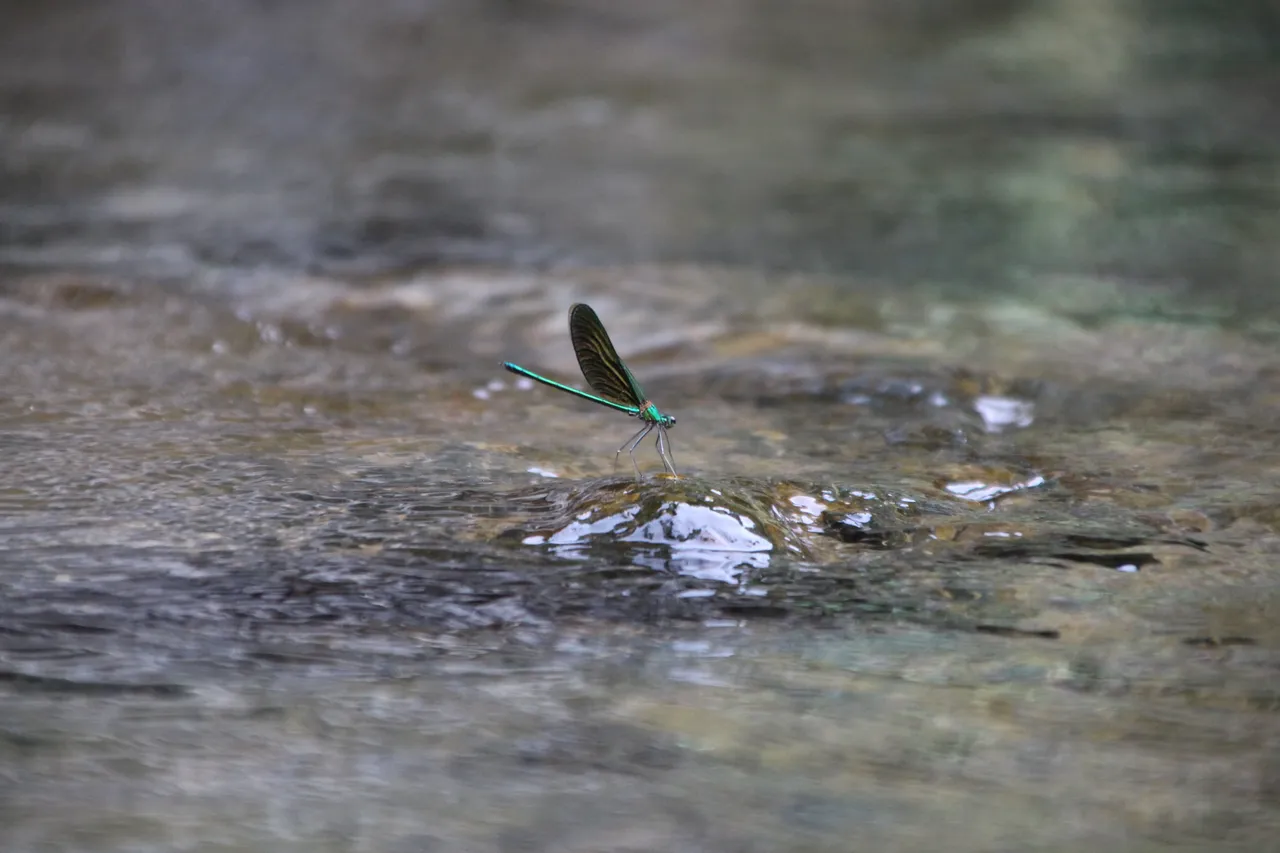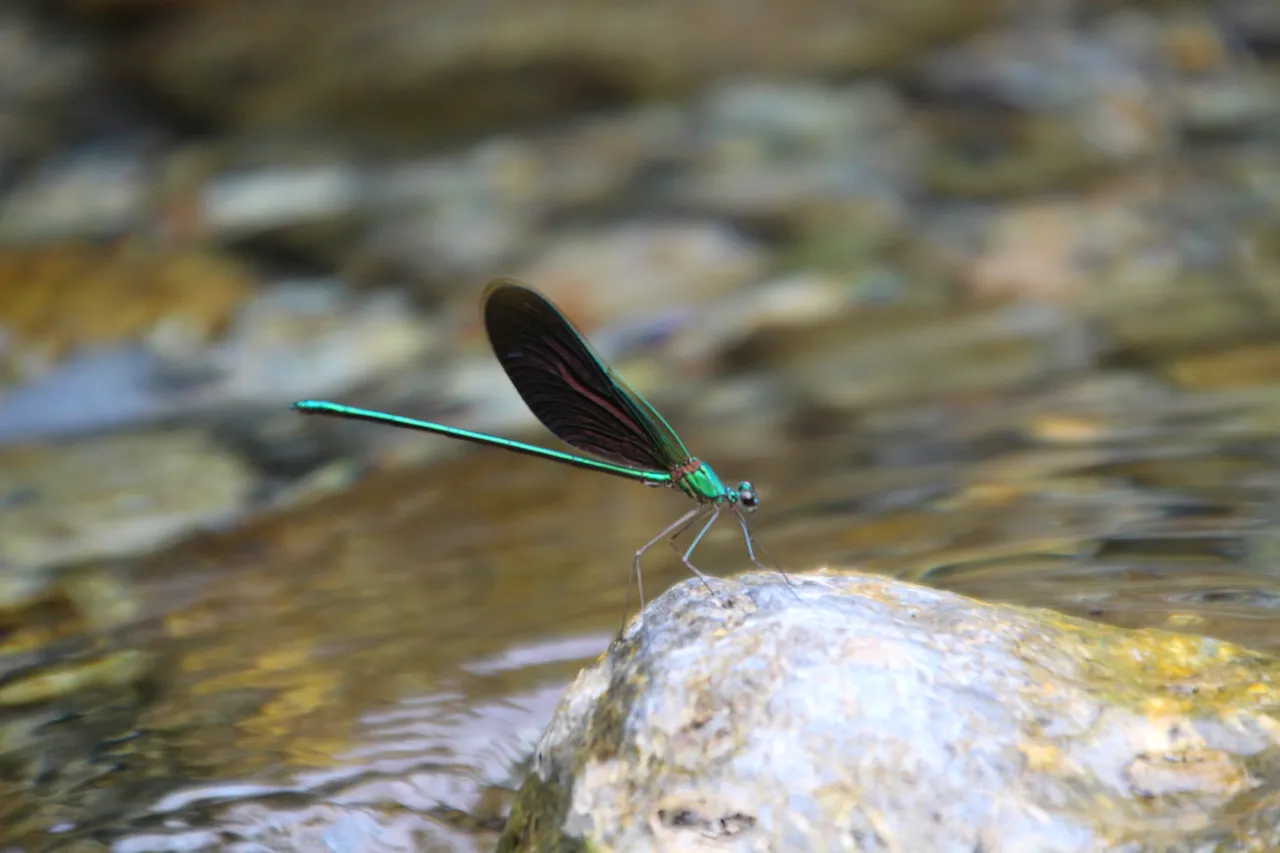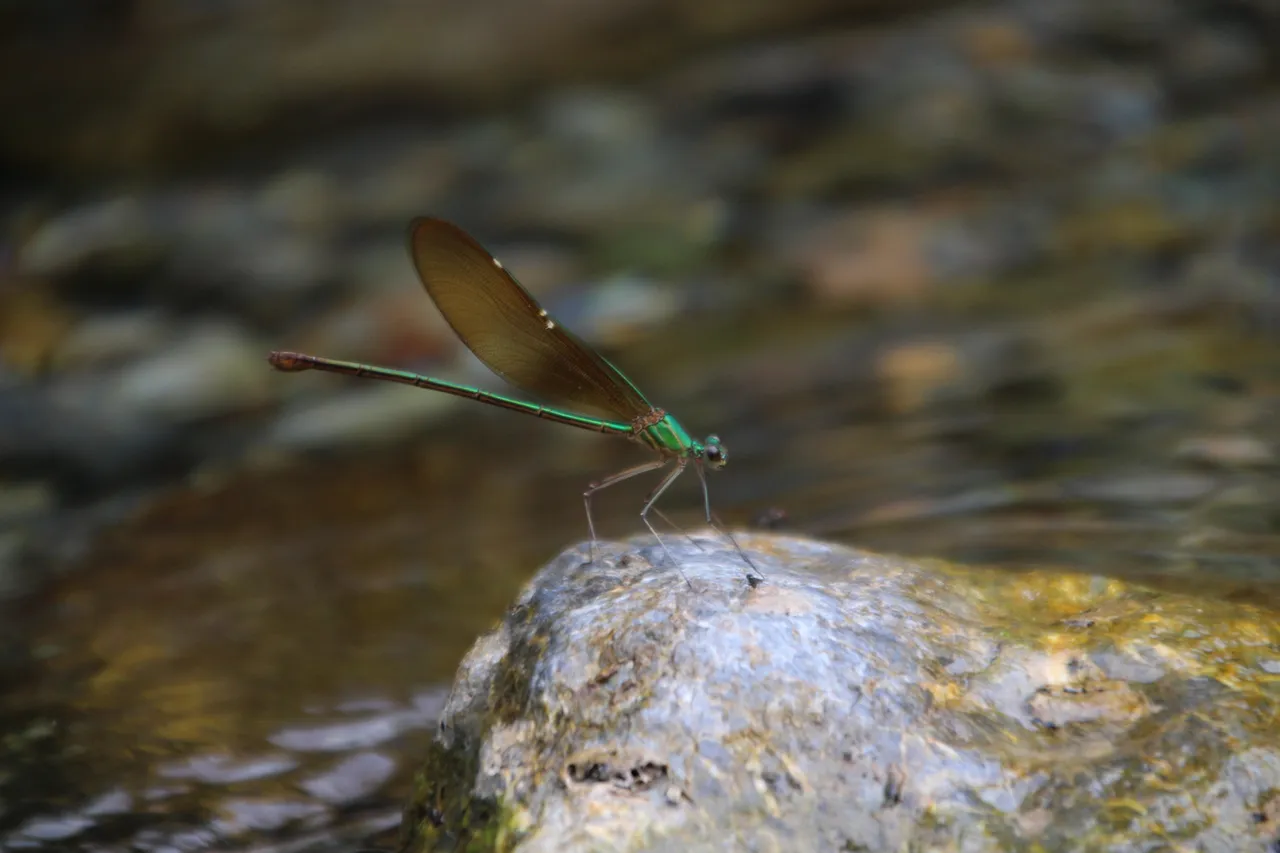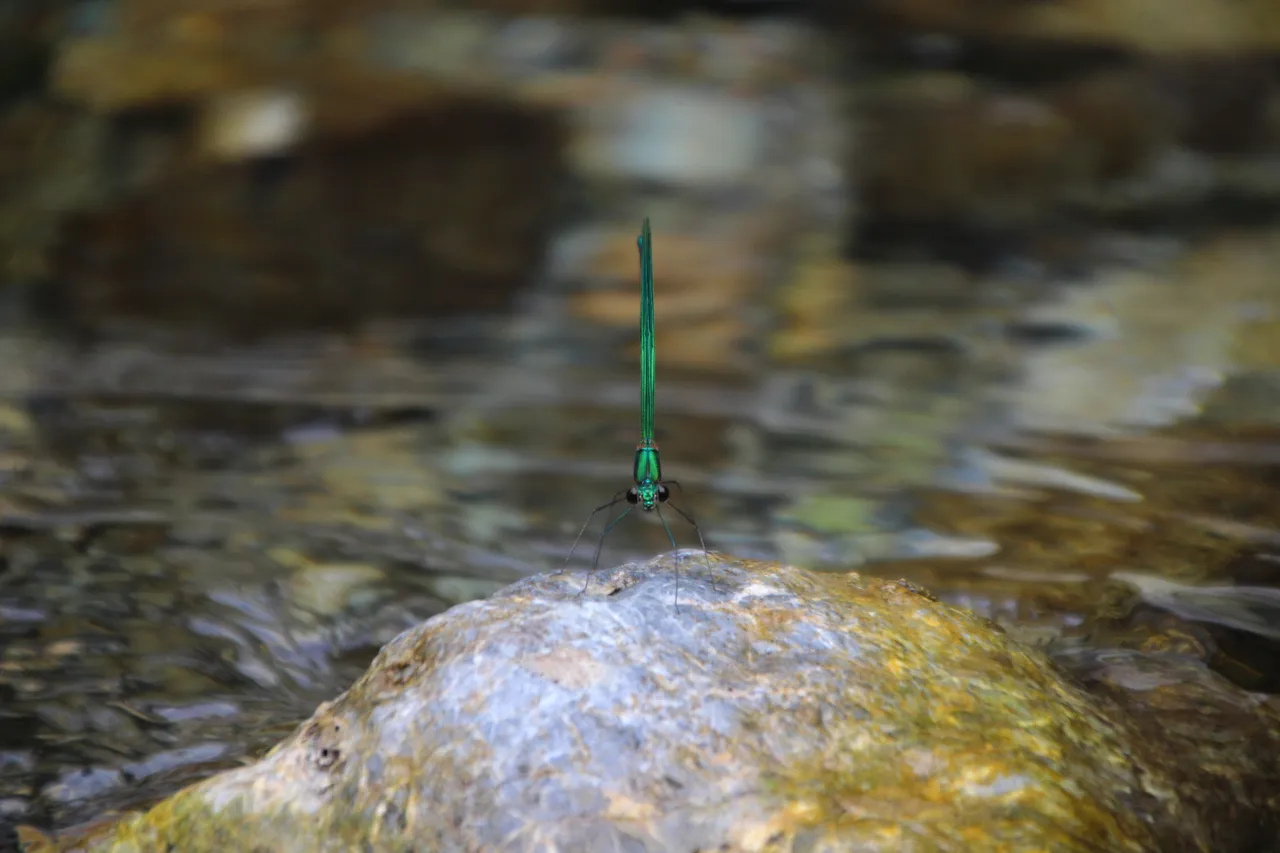Hello hive'r..
In this post I will share about a very unique small animal, the animal is a needle dragonfly. This post is for the contest insects the world hosted by @adalger.

The Unique Story of the Needle Dragonfly
This one animal is from the dragonfly family. One thing that is distinctive about this animal is its small, slender body size and resembles a needle, so it is called the needle dragonfly.
Needle dragonflies or commonly called damselfly, are insects belonging to the order Odonata, suborder Zygoptera (Lilies S., Christina, 1991). and Types of dragonflies are usually divided into two major groups, namely dragonflies or sibar-sibar and needle dragonflies (Amri and Toguan, 2008).
Needle dragonflies are also commonly found in water sources, such as swamps, rivers, lakes, or rice fields. They choose to live in clean and unpolluted water sources to lay their eggs so that their standard of living is guaranteed. That's why the presence of dragonflies can be used as an indication, whether the waters are still clean or polluted.
Adult needle dragonflies will hunt their prey in the air, this is done mainly on small insects. Therefore, the presence of the needle dragonfly can also be a control against the mosquito population.

The male dragonfly defends its territory with its wings open and prominently displays the iridescent copper markings of the upper hind wings.
The researchers observed the needle dragonfly's behavioral behaviors, such as wing warning, wing clapping, flight friction and belly bobbing. Wing-warning is the rapid and aggressive opening and closing of the wings, whereas wing-clapping is the slower opening of the wings followed by rapid closing, up to eight consecutive times, and often following flight; it may be affected by the thermo-regulatory function (Bick and Juanda, 1961).

All needle dragonflies lay their eggs inside the plant body. Those that lay eggs underwater can submerge themselves for 30 minutes at a time, climbing along the stems of aquatic plants and laying eggs at intervals. (Lawlor 1999).
When it becomes an egg, the needle dragonfly is at risk of becoming food for the fish in these waters. And after hatching is called a larva and then becomes a nymph. And in contrast to the eggs, this needle dragonfly nymph becomes a predator for small fish and young fish.
The larvae catch prey by regurgitating a long, hinged lower lip, or "mask."
A needle dragonfly larva can be distinguished from a dragonfly larva in general, by its breathing apparatus. Most needle dragonflies usually have three leaf-like gills at the end of the abdomen, while other dragonflies have internal gills. After emerging from the larval stage, it automatically takes to the air to feed and mate.
Needle dragonflies are hemimetabolous insects that do not have a pupal stage in their development.

This insect is very beautiful with a color combination that really captivated me when I saw it. I took this photo of the needle dragonfly while traveling to the Alue Ie Putek waterfall, Tangse, Pidie, Aceh.
Source of Information


